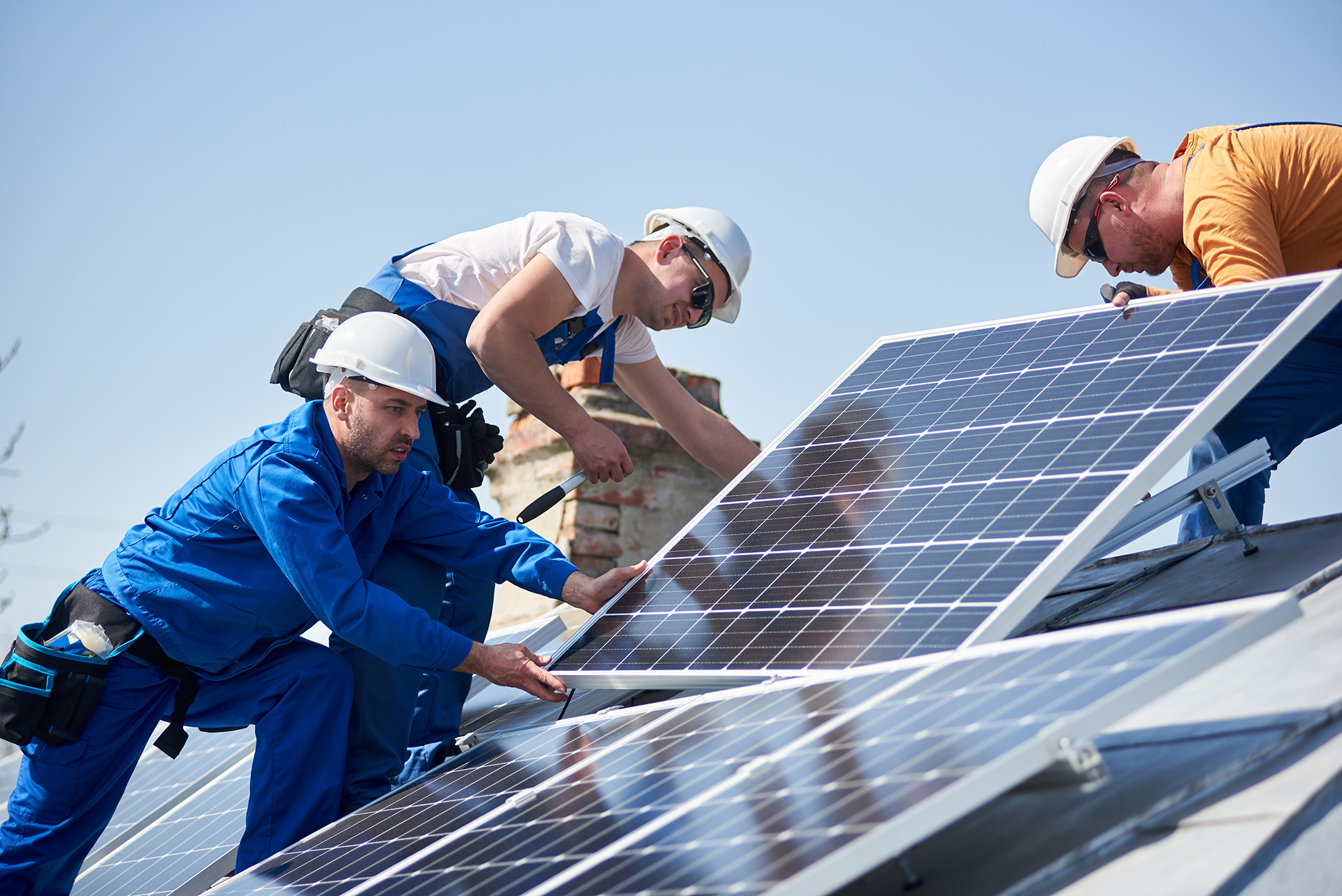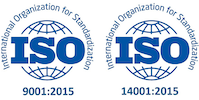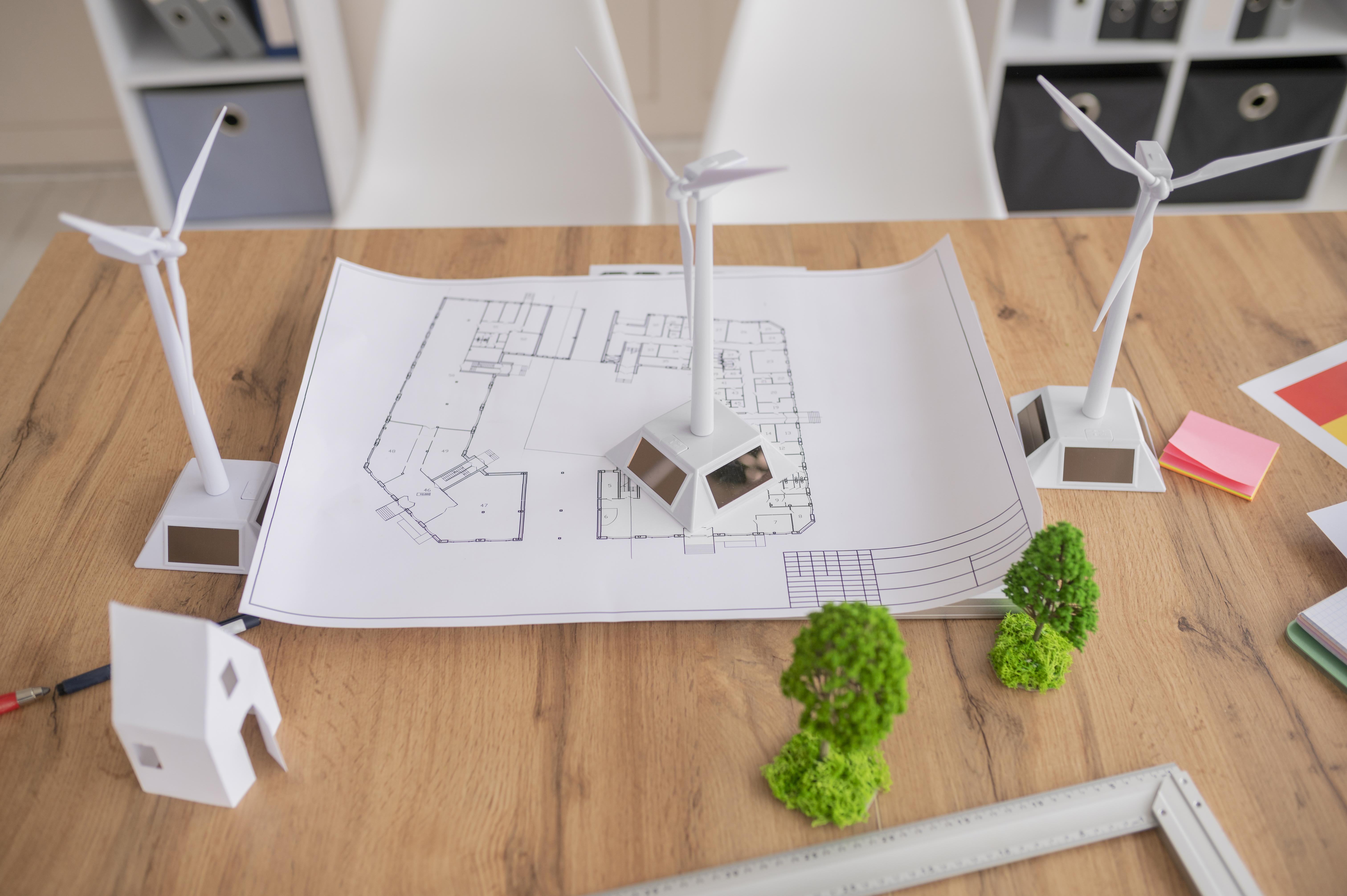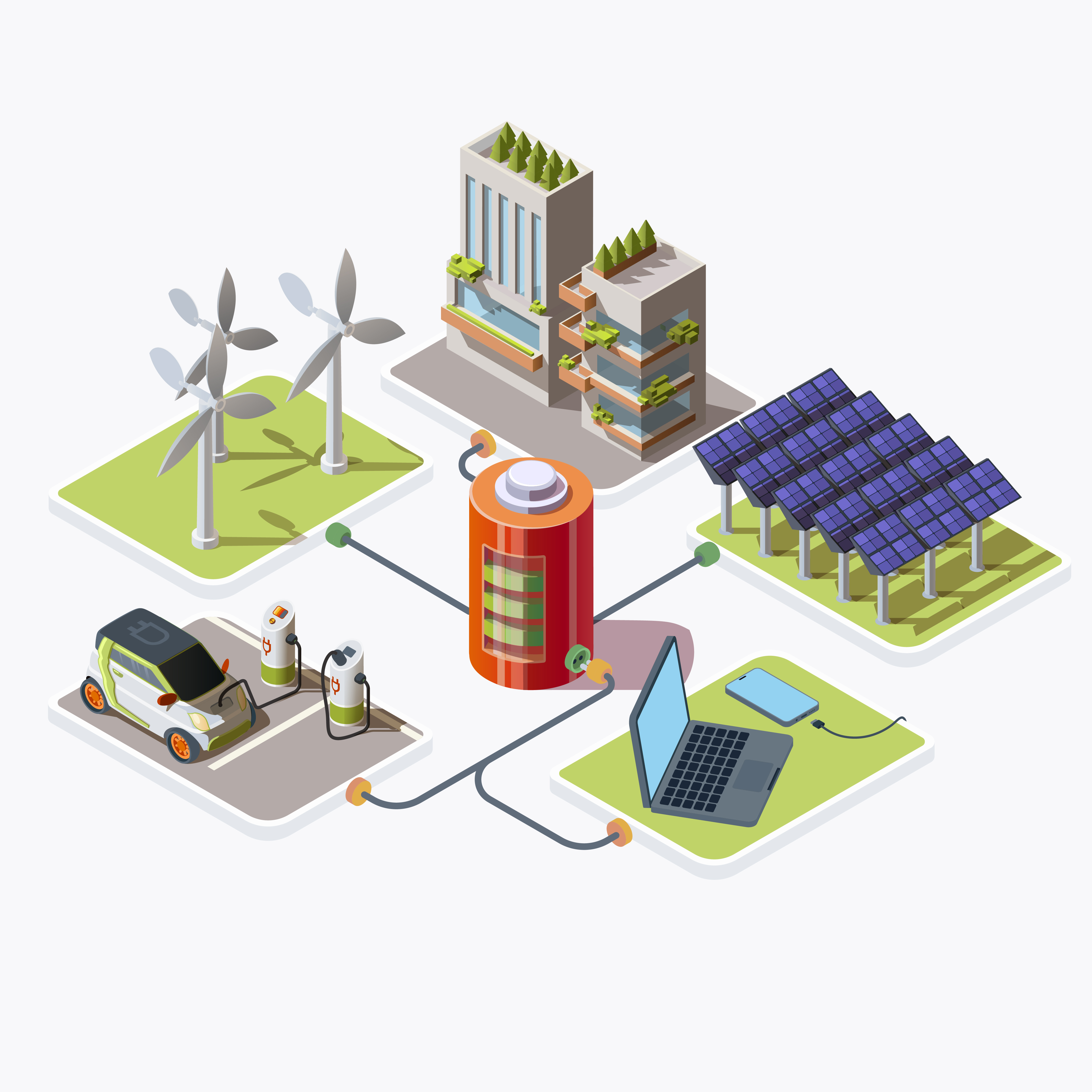.
Table of Contents
ToggleIntroduction
Before diving into the intricacies of troubleshooting, let’s briefly revisit the fundamentals of solar panel systems. A solar panel system comprises several components working cohesively to harness sunlight and convert it into usable electricity. These components typically include solar panels, inverters, batteries (if applicable), and supporting infrastructure such as mounting hardware and wiring.
In recent years, the adoption of solar panel systems has surged dramatically as individuals and businesses seek sustainable energy solutions. While solar energy offers numerous benefits, including reduced electricity bills and environmental conservation, like any technology, solar panel systems are not immune to issues. From intermittent power generation to inverter malfunctions and battery degradation, various challenges can arise. In this comprehensive guide, we’ll delve into troubleshooting common issues with solar panel systems, providing insights and solutions for each.
Common Issues with Solar Panel Systems
Despite their numerous benefits, solar panel systems can encounter various issues that affect their performance and efficiency. Understanding these common issues is crucial for effective troubleshooting and maintenance. Intermittent power generation, where solar panels produce inconsistent output, is a prevalent issue faced by system owners. Several factors contribute to this phenomenon, including shading from nearby obstructions, improper panel orientation, and fluctuating weather conditions.
To address intermittent power generation, start by inspecting for shading that may be obstructing sunlight from reaching the panels. Trim overhanging branches or consider relocating nearby objects causing shading. Additionally, ensure that panels are properly oriented towards the sun and adjust their tilt angles if necessary. Monitoring weather conditions and their impact on sunlight availability can also help anticipate fluctuations in power generation.
Inverters play a crucial role in converting the direct current (DC) electricity generated by solar panels into alternating current (AC) electricity usable by household appliances and the electrical grid. Inverter malfunctions can disrupt the entire system’s functionality, leading to reduced energy production or complete shutdown. When encountering inverter issues, start by checking for error messages or warning indicators on the inverter display. These messages often provide valuable insights into the nature of the problem, such as overvoltage or overheating. Inspect electrical connections to ensure they are secure and free from corrosion. Additionally, check for firmware updates recommended by the manufacturer, as these updates may contain fixes for known issues.
Battery Degradation
For solar panel systems equipped with battery storage, battery degradation over time is a common concern. Batteries degrade due to factors such as cycling (charging and discharging), temperature variations, and internal chemical reactions, leading to diminished storage capacity and overall system performance. To assess battery degradation, measure its remaining capacity compared to its original capacity. This can be done using battery monitoring systems or specialized testing equipment. Inspect the batteries for physical damage such as corrosion or leakage, which can accelerate degradation. Evaluate the charging and discharging patterns to ensure they are optimized for battery longevity, avoiding deep discharges and overcharging.
Regular monitoring and assessment of system performance are essential for identifying issues early and optimizing energy production. Several metrics and techniques can help gauge the effectiveness of a solar panel system. Monitoring the system’s power output provides valuable insights into its performance over time. Compare the actual power generated by the solar panels with the expected output based on factors such as sunlight intensity and panel specifications. Any significant deviations from expected performance may indicate underlying issues requiring attention.
Maintaining historical data on energy production and system performance allows for trend analysis and anomaly detection. Look for patterns or trends in energy production that may indicate deteriorating performance or recurring issues. Historical data also facilitates informed decision-making regarding system upgrades or maintenance interventions. Regularly compare the system’s actual performance with its expected performance under ideal conditions. Factors such as geographical location, tilt angle, shading, and weather patterns influence expected performance. Deviations from expected performance may signal inefficiencies or issues requiring troubleshooting.
Safety Precautions during Troubleshooting
Safety should always be a top priority when troubleshooting solar panel systems, as they involve working with electrical components and heights. Implementing proper safety measures minimizes the risk of accidents and ensures the well-being of individuals involved. Before conducting any maintenance or troubleshooting activities, ensure that the system is safely isolated from the electrical grid and that all relevant circuit breakers or switches are turned off. Use insulated tools and equipment rated for electrical work to reduce the risk of electric shock. Additionally, wear appropriate personal protective equipment (PPE), including insulated gloves and safety glasses, when working with electrical components.
Personal protective equipment (PPE) is essential for safeguarding against potential hazards during troubleshooting activities. Depending on the nature of the task, PPE may include safety gloves, safety goggles, hard hats, and fall protection equipment when working at heights. Properly fitting and maintaining PPE is crucial for ensuring its effectiveness in preventing injuries.
Some troubleshooting tasks may require specialized knowledge or technical expertise beyond the capabilities of the system owner. In such cases, seeking assistance from qualified professionals, such as certified solar technicians or electricians, is advisable. Professional assistance ensures that troubleshooting activities are conducted safely and effectively, minimizing the risk of further complications.
Importance of Regular Maintenance
Regular maintenance is key to ensuring the long-term performance and reliability of solar panel systems. By proactively addressing minor issues and optimizing system components, maintenance activities prolong the system’s lifespan and maximize energy production.
Periodic cleaning of solar panels is essential for maintaining optimal performance. Dirt, dust, pollen, and other debris can accumulate on the panel surface, reducing sunlight absorption and energy production. Clean the panels using a soft brush or sponge and mild detergent, avoiding abrasive materials that may scratch the surface. Rinse thoroughly with water to remove any residue and ensure unobstructed sunlight exposure. Inspecting electrical connections for signs of looseness or corrosion helps prevent voltage drops and potential safety hazards. Tighten loose connections using appropriate tools and ensure that all connections are secure and properly insulated. Pay close attention to junction boxes, terminal blocks, and wiring connections between panels, inverters, and batteries.
Many modern solar panel systems feature software or firmware that controls system operation and performance. Regularly updating this software ensures compatibility with the latest technologies and may include bug fixes or performance enhancements. Follow manufacturer guidelines for updating software or firmware, taking necessary precautions to prevent data loss or system downtime.
Environmental Factors Affecting Performance
Environmental factors such as temperature variations, dust and debris accumulation, and humidity levels can impact the performance and efficiency of solar panel systems. Understanding these factors and their effects is essential for optimizing system performance and addressing potential issues.
Temperature variations, both diurnal (daily) and seasonal, affect the efficiency of solar panels and electrical components. High temperatures can lead to reduced panel efficiency and increased resistance in electrical connections, while low temperatures may affect battery performance and system operation. Monitoring temperature fluctuations and implementing appropriate cooling or heating measures helps maintain optimal system performance. Dust, pollen, bird droppings, and other debris can accumulate on the surface of solar panels, reducing sunlight absorption and energy production. Regular cleaning and maintenance are necessary to remove debris and ensure unobstructed sunlight exposure. In areas with high dust or pollution levels, more frequent cleaning may be required to maintain peak performance.
Humidity levels and precipitation can affect system performance and safety, particularly in humid or rainy climates. Moisture ingress into electrical components can lead to corrosion, short circuits, and electrical hazards. Ensure that all electrical connections are properly sealed and protected from moisture, and consider installing weatherproof enclosures for sensitive equipment. Additionally, inspect mounting hardware and support structures for signs of corrosion or degradation due to exposure to moisture.
Dealing with Grid Connection Issues
Grid connection issues can disrupt the seamless operation of solar panel systems, affecting energy export and system stability. Understanding the common causes of grid connection issues and implementing appropriate solutions is essential for maintaining reliable system performance. Start by verifying the status of the grid connection to ensure that the system is properly connected and synchronized with the electrical grid. Check for any visible indicators or warning lights on the inverter or monitoring system that may indicate grid connection issues. If the system is not exporting power to the grid as expected, investigate potential causes such as grid outages, voltage fluctuations, or utility company restrictions.
If grid connection issues persist, contact the utility provider or electrical distribution company to report the problem and seek assistance. Utility companies have procedures in place for addressing grid-related issues and may dispatch technicians to investigate and resolve the problem. Provide relevant details such as system configuration, inverter model, and any error messages or diagnostic information to facilitate troubleshooting.
Faulty or malfunctioning metering equipment can also contribute to grid connection issues, preventing accurate measurement and reporting of energy export. Inspect the metering equipment, including bi-directional meters and associated wiring, for signs of damage or malfunction. Ensure that the metering equipment is properly configured and calibrated according to local regulations and utility company requirements. If necessary, contact the utility provider to request meter testing or replacement.
Understanding Warranty Coverage
Solar panel systems typically come with warranties covering various components such as panels, inverters, and batteries. Understanding the terms and conditions of these warranties is crucial for determining coverage and eligibility for repairs or replacements. Carefully review the warranty documentation provided by the manufacturer or installer to understand the scope of coverage and duration of the warranty period. Pay attention to specific terms and conditions, such as exclusions, limitations, and requirements for warranty claims. Note any maintenance or servicing requirements stipulated by the warranty provider to maintain eligibility for coverage.
Keep detailed records of any issues or malfunctions encountered during the operation of the solar panel system, including dates, descriptions, and relevant diagnostic information. Documenting issues helps establish a clear timeline of events and provides supporting evidence for warranty claims. Take photographs or videos of any visible damage or abnormalities to supplement your documentation.
If you encounter issues covered by the warranty, contact the manufacturer or installer promptly to initiate the warranty claims process. Provide the necessary documentation and evidence to support your claim, including proof of purchase, warranty certificate, and detailed description of the issue. Follow the manufacturer’s or installer’s instructions for submitting warranty claims and adhere to any deadlines or requirements specified.
Impact of System Age on Performance
The age of a solar panel system can significantly impact its performance and reliability over time. Understanding how system age affects various components and functionalities helps anticipate potential issues and plan for maintenance or upgrades. Solar panels and other system components experience gradual degradation over time due to factors such as exposure to sunlight, temperature variations, and environmental stresses. Monitor the performance of the system regularly to identify signs of degradation, such as reduced energy production, increased downtime, or visible wear and tear. Compare current performance metrics with historical data to assess the rate of degradation and plan for necessary interventions.
As solar panel technology advances and system components become more efficient and cost-effective, consider planning for system upgrades to enhance performance and reliability. Upgrading outdated or underperforming components such as inverters or batteries can improve overall system efficiency and energy production. Evaluate the cost-benefit ratio of system upgrades based on factors such as anticipated energy savings, maintenance costs, and available incentives or rebates.
Stay informed about the latest technological advancements and innovations in the solar energy industry, as these developments may offer opportunities to improve system performance and functionality. Research emerging technologies such as advanced panel materials, smart inverters, and energy management systems that can enhance the capabilities of your solar panel system. Consult with reputable suppliers or solar energy experts to explore options for integrating new technologies into your existing system.
Troubleshooting Communication Errors
Communication errors between system components such as inverters, monitoring devices, and control systems can disrupt data transmission and system operation. Troubleshooting communication errors requires diagnosing and addressing issues related to hardware, software, and network connectivity. Start by checking the monitoring system or software interface used to communicate with the solar panel system. Look for error messages or warning indicators that may indicate communication failures or data synchronization issues. Verify that the monitoring system is properly configured and connected to the relevant components of the solar panel system, including inverters, batteries, and sensors.
Ensure that the monitoring system has access to reliable internet connectivity for transmitting data to remote monitoring platforms or cloud-based servers. Check network settings, router configurations, and internet service provider (ISP) connectivity to troubleshoot any issues affecting internet access. Consider implementing redundant internet connections or backup communication methods such as cellular or satellite connectivity to ensure continuous monitoring and data logging.
If communication errors persist, try resetting or power cycling the communication devices involved, such as inverters, routers, or data loggers. Power cycling can help reset communication protocols and clear temporary glitches or conflicts affecting data transmission. Follow manufacturer guidelines for safely resetting or rebooting communication devices and ensure that system settings are not inadvertently altered during the process.
Investigating Energy Storage Issues
For solar panel systems equipped with battery storage, maintaining optimal battery performance is essential for maximizing energy independence and resilience. Investigating energy storage issues involves assessing battery health, monitoring charging and discharging parameters, and troubleshooting system configurations. Start by assessing the health and condition of the batteries used in the solar panel system. Measure the remaining capacity and state of charge (SOC) of the batteries using battery monitoring systems or diagnostic tools. Check for signs of physical damage, leakage, or corrosion on battery terminals and casing. Perform load tests or capacity tests to evaluate the overall health and performance of the batteries and identify any cells or modules exhibiting abnormalities.
Review the charging and discharging parameters programmed into the battery management system (BMS) or charge controller to ensure they are optimized for battery longevity and performance. Adjust charging voltage, current limits, and charge profiles as needed to prevent overcharging, undercharging, or excessive cycling that can accelerate battery degradation. Monitor battery temperature during charging and discharging cycles to prevent overheating and optimize charging efficiency.
Software glitches or firmware bugs in the battery management system (BMS) or charge controller can cause erratic behavior and performance issues in solar panel systems with battery storage. Check for firmware updates or software patches released by the manufacturer to address known issues or vulnerabilities. Follow the manufacturer’s guidelines for updating firmware and ensure that proper backup procedures are in place to prevent data loss or system downtime during the update process.
Community Support and Resources
Navigating the complexities of troubleshooting solar panel systems can be challenging, especially for new system owners or installers. Community support networks and online resources provide valuable guidance, expertise, and peer-to-peer assistance for addressing common issues and sharing best practices. Join online forums, discussion groups, and social media communities dedicated to solar energy and renewable technologies. Participate in discussions, ask questions, and share experiences with other system owners, installers, and industry professionals. Online forums provide a wealth of knowledge and practical insights into troubleshooting techniques, maintenance tips, and equipment recommendations.
Connect with local solar energy associations, industry organizations, and advocacy groups in your area to access resources and support networks. Attend workshops, seminars, and networking events organized by these associations to learn from experienced professionals and stay updated on the latest industry trends and developments. Joining a local solar energy association provides opportunities for collaboration, education, and advocacy on renewable energy issues.
When facing complex or persistent issues with solar panel systems, seek assistance from qualified professionals such as solar consultants or technicians. Professional consultants offer expertise in system design, performance analysis, and troubleshooting, helping identify and resolve issues efficiently. Similarly, certified solar technicians have the knowledge and skills to diagnose and repair equipment faults, optimize system performance, and ensure compliance with safety standards and regulations.
Documenting Troubleshooting Procedures
Documenting troubleshooting procedures and maintenance activities is essential for ensuring transparency, accountability, and continuity in managing solar panel systems. Establishing clear documentation practices facilitates communication, knowledge sharing, and quality assurance throughout the system’s lifecycle. Maintain a detailed maintenance log or journal documenting all troubleshooting activities, repairs, inspections, and maintenance tasks performed on the solar panel system. Include dates, descriptions, and outcomes of each activity, as well as any relevant observations, measurements, or diagnostic data. Organize the maintenance log chronologically or categorically for easy reference and retrieval.
Record observations and actions taken during troubleshooting sessions, including symptoms observed, tests conducted, and solutions implemented. Document any changes made to system settings, configurations, or hardware components, as well as the rationale behind these changes. Include photographs, diagrams, or sketches illustrating key findings or repair procedures to enhance clarity and understanding.
Facilitate future diagnostics and maintenance by maintaining accurate and up-to-date documentation of the solar panel system’s configuration, components, and operational parameters. Create equipment lists, wiring diagrams, and inventory records detailing the make, model, serial numbers, and specifications of all system components. Store documentation in a secure and accessible location, such as a digital repository or physical binder, and ensure that relevant personnel have permission to access and update the documentation as needed.
Utilizing Remote Monitoring Solutions
Remote monitoring solutions enable real-time monitoring, control, and management of solar panel systems from anywhere with internet access. Leveraging remote monitoring solutions provides system owners and operators with visibility into system performance, alerts for anomalies, and remote troubleshooting capabilities to ensure optimal operation and efficiency. Install monitoring software or mobile apps provided by the system manufacturer or third-party vendors to access real-time data and insights on system performance. Configure the monitoring software to display key performance metrics, alerts, and notifications relevant to your specific requirements and preferences. Use the monitoring software to track energy production, monitor battery status, and diagnose potential issues remotely.
Set up alerts and notifications within the monitoring software to receive instant notifications of system anomalies, faults, or performance deviations. Customize alert thresholds, escalation levels, and notification channels based on the severity and urgency of the issue. Receive alerts via email, SMS, or mobile app notifications to promptly respond to critical events and minimize downtime or revenue loss.
Utilize remote troubleshooting capabilities provided by monitoring software or remote access tools to diagnose and resolve issues without the need for onsite visits. Access system dashboards, configuration settings, and diagnostic tools remotely to troubleshoot errors, reset devices, or adjust settings as needed. Collaborate with remote support teams, technicians, or consultants to leverage their expertise and guidance in resolving complex issues efficiently.
Conclusion
Troubleshooting common issues with solar panel systems requires a systematic approach, combining technical expertise, diagnostic tools, and proactive maintenance practices. By understanding the fundamentals of solar energy, assessing system performance, and addressing potential issues proactively, system owners and operators can maximize energy production, optimize system efficiency, and ensure long-term reliability. With continuous monitoring, regular maintenance, and access to remote support resources, solar panel systems can deliver clean, renewable energy for years to come, contributing to a sustainable and resilient energy future.
FAQs
How can I troubleshoot intermittent power generation in my solar panel system?
Intermittent power generation can be caused by shading, improper panel orientation, or weather conditions. Start by checking for shading from nearby objects and adjusting panel orientation if necessary. Monitor weather patterns and consider trimming overhanging branches or relocating obstructions to optimize sunlight exposure.
What should I do if I suspect an inverter malfunction in my solar panel system?
If you suspect an inverter malfunction, check for error messages or warning indicators on the inverter display. Inspect electrical connections for looseness or corrosion, and ensure that the inverter is properly ventilated. Consider updating the firmware or contacting the manufacturer for further assistance.
How can I prevent battery degradation in my solar panel system with battery storage?
To prevent battery degradation, monitor battery health regularly and avoid deep discharges or overcharging. Implement proper charging and discharging profiles, and ensure that batteries are kept within recommended temperature ranges. Consider investing in advanced battery management systems for optimized performance and longevity.
What safety precautions should I take when troubleshooting my solar panel system?
When troubleshooting your solar panel system, always ensure that the system is safely isolated from the electrical grid and that proper personal protective equipment (PPE) is worn. Use insulated tools and follow manufacturer guidelines for resetting or rebooting equipment. If unsure, seek professional assistance to minimize the risk of accidents.
How can I optimize the performance of my solar panel system over time?
Optimizing the performance of your solar panel system involves regular maintenance, monitoring, and potential upgrades. Keep panels clean, check for loose connections, and stay informed about technological advancements. Utilize remote monitoring solutions for real-time insights and consider consulting with professionals for system assessments and optimizations.







